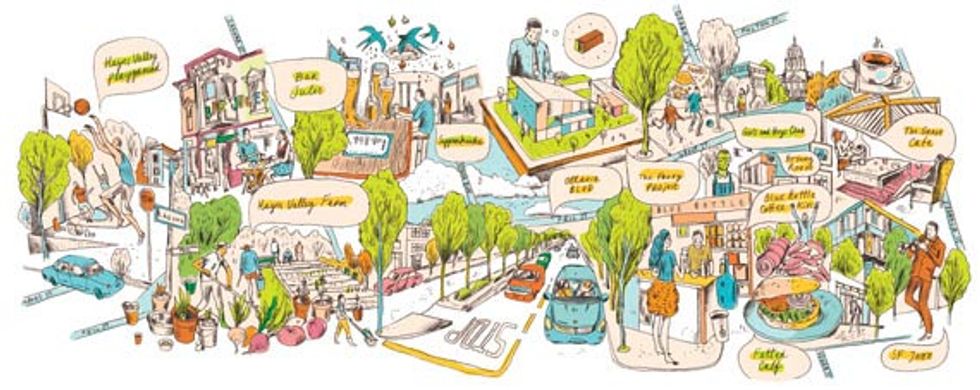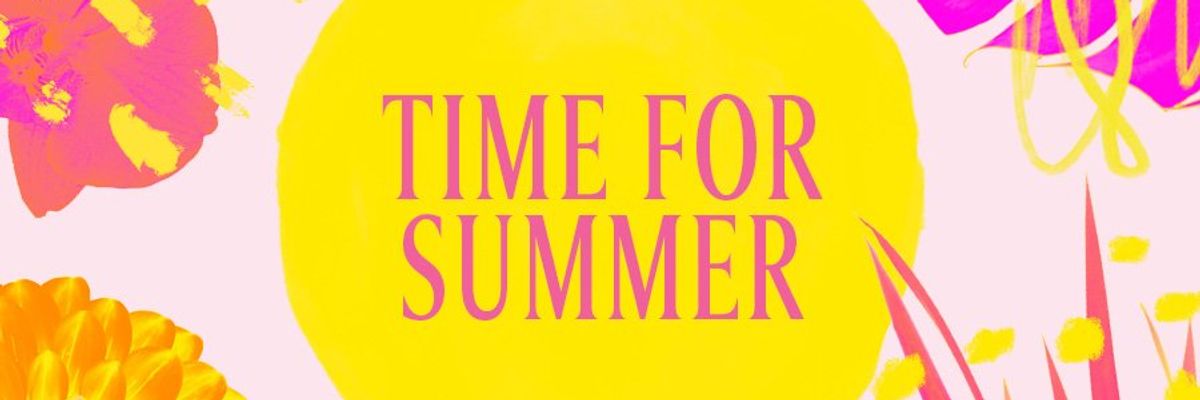It started after the 1989 Loma Prieta earthquake rendered the Central Freeway, which hovered over Hayes Valley, impassable. A few of the neighborhood’s merchants, like Zonal Home Interior’s Russell Pritchard, spent the next couple of years working with the city to tear down the crumbling highway ramps on Franklin, Gough, Oak, and, finally, in 2003, Fell streets. “There wasn’t much foot traffic, and there wasn’t any kind of town square,” says neighborhood association member Pritchard. “There wasn’t a reason for people to spend a lot of time here.”
The concrete facelift was slow-going, but it provided enough of a promise to attract new boutiques that sold Italian boots, French lingerie, unique locally made jewelry, and Eames chairs. The nearby theater set, who came for Hayes Street Grill and Zuni Cafe, also helped bring in a trendier breed of restaurants including Absinthe brasserie, Elizabeth Falkner’s Citizen Cake (now home to Absinthe’s spinoff Boxing Room), Jardiniere, Suppenküche, Bar Jules, and in 2005, Blue Bottle Coffee’s first operation—a kiosk out of a garage on Linden Street. That same year, Octavia Boulevard reopened as a tree-lined street with a grassy park and wide sidewalks, and the weekend shopping and brunch crowds followed.
But it wasn’t until January of 2010 that anything was done with the huge city block bordered by Laguna, Oak, Fell, and Octavia streets, smack in the middle of the neighborhood and left empty after the Central Freeway demolition. (Pritchard blames the delay on the economic downturn and exorbitant cost of building from scratch.) At the start of 2010, though, then-Mayor Gavin Newsom gave urban farmers $50,000 to work the overgrown lot into a full-fledged, food-producing farm for two to five years. During that time, the farm will slowly contract as the land is broken up into 10 parcels for new housing, shops, and a temporary project called Proxy that will include open space, an outdoor theater, a food truck court, stores, and rotating art installations.
“It shows what a vital, young neighborhood can do,” says Pritchard. “By the fall, part of Hayes is turning back into a two-way street so that it’s more pedestrian-friendly. The Grove, Lers Ros Thai, and an izakaya are opening in the same building. With Proxy at the corner of Octavia and Linden, we’re getting Smitten Ice Cream, Ritual Coffee, Delfina Pizzeria, and an outdoor Biergarten from Suppenkuche. The whole flow of the neighborhood is adjusting.”
And someday, when someone does come up with the cash to develop the center of Hayes into something more permanent, the pop-up structure can be dismantled, recycled, and its parts reused to make way for whatever’s next. x
Hayes Valley Timeline
June 1993: A butcher shop on the corner of Hayes and Laguna reopens as Suppenküche, the precursor to SF’s obsession with imported brews and bratwurst.
September 2005: The Central Freeway Replacement Project/Octavia Boulevard opens the street for the first time since the 1989 Loma Prieta earthquake.
January 2005: In revolt against the proliferation of national coffee chains, micro-roasted Blue Bottle Coffee opens a kiosk on Linden Street, starting a Third Wave coffee revolution that eventually spreads throughout the city.
December 2007: Underdog enclave Hayes Valley wins top honors in the annual Curbed Cup blog poll for best SF neighborhood.
January 2010: Hayes Valley Farm sprouts up on an empty lot at Laguna and Fell streets, giving backyard-less residents a central gathering space for morning yoga, composting workshops, gardening, and outdoor films.
March 2010: With the help of Project Homeless Connect, the Growing Home Community Garden on Octavia Street (no longer a boulevard) begins growing food for both the homeless and its residential neighbors.
May 2010: Official plans are released for the massive LEED gold-certified SFJazz Center (to include a theater and practice space, as well as a cafe) to be built on Franklin Street. Its $60 million price tag is offset by an anonymous $20 million donation.
September 2010: A new butcher arrives on the block when The Fatted Calf opens on Fell Street and holds Pork Happy Hour on Wednesdays.
November 2010: Plans are announced for an ongoing pop-up series, The Proxy Project, that will bring in local chefs, an outdoor movie screen, and rotating businesses to fill a new collaboration space on Octavia Street.
January 2011: A new Boys and Girls Club facility is proposed by SF chapter president Rob Connolly for the corner of Gough and Fulton streets. If built, it will house a swimming pool and gym.
January 2011: The Grove Cafe opens its fourth location on Franklin Street near Hayes.
May 2011: First in a string of public playground overhauls via the Trust for Public Land organization, Hayes Valley Playground and Clubhouse is slated to reopen with an outdoor stage, fitness equipment, and a recreation area with a living roof.
*Published in the April 2011 issue of 7x7 magazine





















